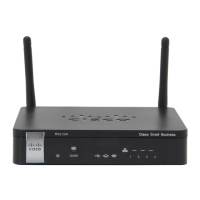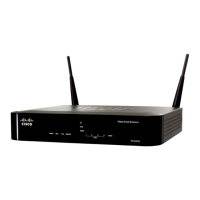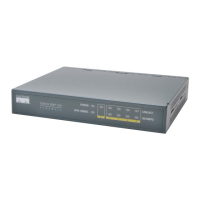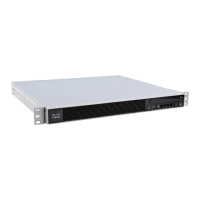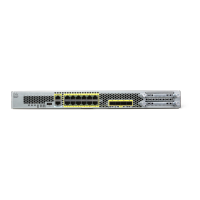Configuring Networking
Configuring Routing
Cisco RV215W Wireless-N VPN Firewall Administration Guide 49
6
STEP 3 Click Save.
Configuring Static Routing
You can configure static routes to direct packets to the destination network. A
static route is a predetermined pathway that a packet must travel to reach a
specific host or network.
Some ISPs require static routes to build your routing table instead of using
dynamic routing protocols. Static routes do not require CPU resources to
exchange routing information with a peer router.
You can also use static routes to reach peer routers that do not support dynamic
routing protocols. Static routes can be used together with dynamic routes. The
device supports up to 30 static routes.
Be careful not to introduce routing loops in your network.
To configure static routing:
STEP 1 Choose Networking > Routing.
STEP 2 From the Route Entries drop-down menu, choose a route entry.
To delete the route entry, click Delete This Entry.
STEP 3 Configure the following settings for the selected route entry:
RIP Recv Packet Version Choose the RIP Receive Packet Version.
Enter Route Name Enter the name of the route.
Destination LAN IP Enter the IP address of the destination LAN.
Subnet Mask Enter the subnet mask of the destination network.
Gateway Enter the IP address of the gateway used for this
route.

